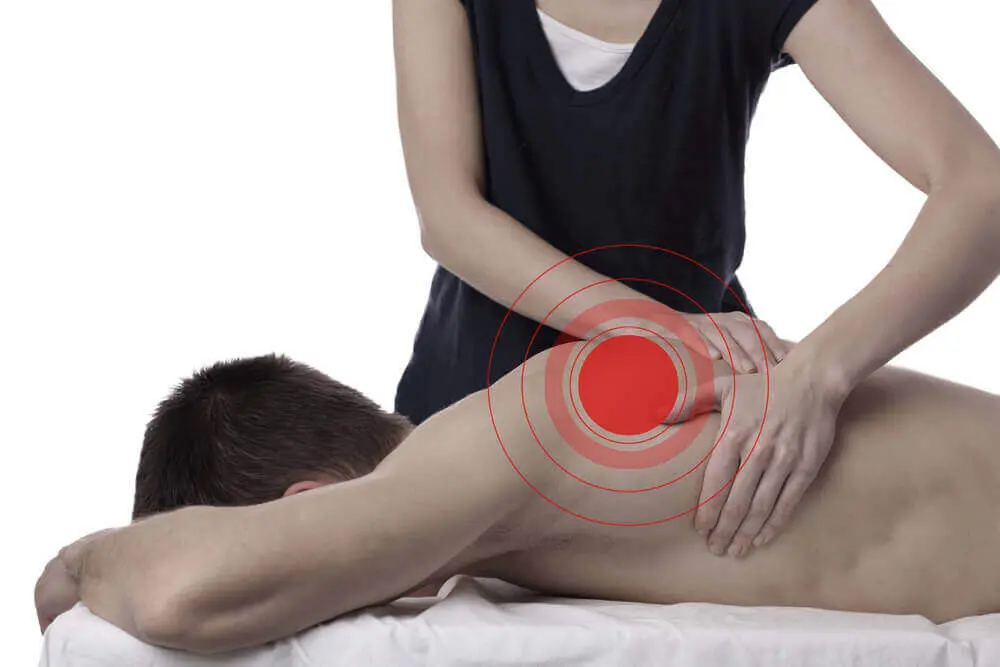Deep tissue massage that focuses on the deep layers of muscle and connective muscle tissue. It is designed to target knots and specific areas of tension in the muscles, and is often used to help alleviate chronic muscle pain, limited mobility, and other forms of muscle injury.
During the massage session, the RMT will use a variety of techniques, such as kneading, pressing, and rolling, to apply deep pressure to the targeted areas. This pressure can help to release chronic muscle tension and pain, improve circulation, and increase flexibility in the muscles.
If you suffer from frequent tension headaches and back pains, you may benefit from a professional deep tissue neck massage. During a deep tissue wellness session at Oakville Massage Therapy, the massage therapist uses a stretching technique along with pressure to pull and stretch your muscles.
This allows the muscles to relax and helps to relieve your headache and tension. The use of massage oil really does help usher in extra feeling and sensation. This helps reduce tension and stress in the muscle joints and help alleviate pain.
During a deep tissue massage, RMT will use a variety of techniques to target the deeper layers of muscle and connective tissue. These techniques may include using the therapist’s hands, forearms, or elbows to apply pressure to the tissues. The therapist may also use kneading, circular movements, and stretching to help release tension in the muscle fibers.
Deep tissue massage can be slightly uncomfortable, as the therapist is working on deeper layers of muscle and tissue. However, the therapist will aim to keep the discomfort to a minimum and will stop the treatment if it becomes too painful. It is important to communicate with the therapist if you are experiencing any discomfort during the massage.
Deep tissue massage is usually done in a series of sessions, as it can take time to work through the deeper layers of muscle and connective tissue. It may be helpful to drink plenty of water after a deep tissue massage to help flush out any toxins that have been released from the muscles.
Benefits of Deep Tissue Massage:
Deep tissue massage is a type of massage that focuses on the deeper layers of muscle tissue. It is designed to reach the deep sections of thick muscles, specifically the individual muscle fibers.
There are several potential benefits of deep tissue massage, including:
- Reducing muscle tension: Deep tissue massage can help to relax the muscles and reduce tension and soreness.
- Improving flexibility and range of motion: Massaging the deep tissues can help to stretch and lengthen muscles, which can improve flexibility and range of motion.
- Relieving chronic pain: Deep tissue massage can help to reduce chronic pain, especially in the lower back, neck, and shoulders.
- Improving circulation: Massaging the deeper layers of muscle can help to improve circulation, which can help to deliver oxygen and nutrients to the cells.
- Reducing stress and promoting relaxation: Massage can be a very effective way to reduce stress and promote relaxation.
It is important to note that while deep tissue massage can be beneficial, it may also cause some discomfort or soreness during or after the massage. It is important to communicate with the massage therapist about any pain or discomfort you may be experiencing.
Deep Tissue Massage Techniques:
There are several techniques that a therapist may use during a deep tissue massage to help release tension in the deeper layers of muscle and connective tissue:
- Friction: The therapist will apply deep, circular motions with their fingertips, thumbs, or palms to create friction on the skin and underlying tissues. This can help to loosen adhesions and promote blood flow.
- Petrissage: The therapist will use kneading, rolling, and lifting movements to manipulate the muscles and promote relaxation.
- Tapotement: The therapist will tap the muscles with their hands or a tool such as a cupping massage tool to stimulate circulation and help release tension.
- Compression: The therapist will use their hands or a tool to apply pressure to the muscles, helping to release tension and improve circulation.
- Stripping: The therapist will use their fingers or a tool to gently “strip” along the length of the muscle fibers, helping to loosen adhesions and improve flexibility.
- Trigger point therapy: The therapist will focus on specific “trigger points” in the muscle, which are areas of tension or muscle spasms. They will apply pressure to these points to help release the tension and promote relaxation.
It is important to communicate with your therapist about your specific needs and any areas of discomfort during the massage. The therapist will tailor the techniques to your individual needs and preferences.

